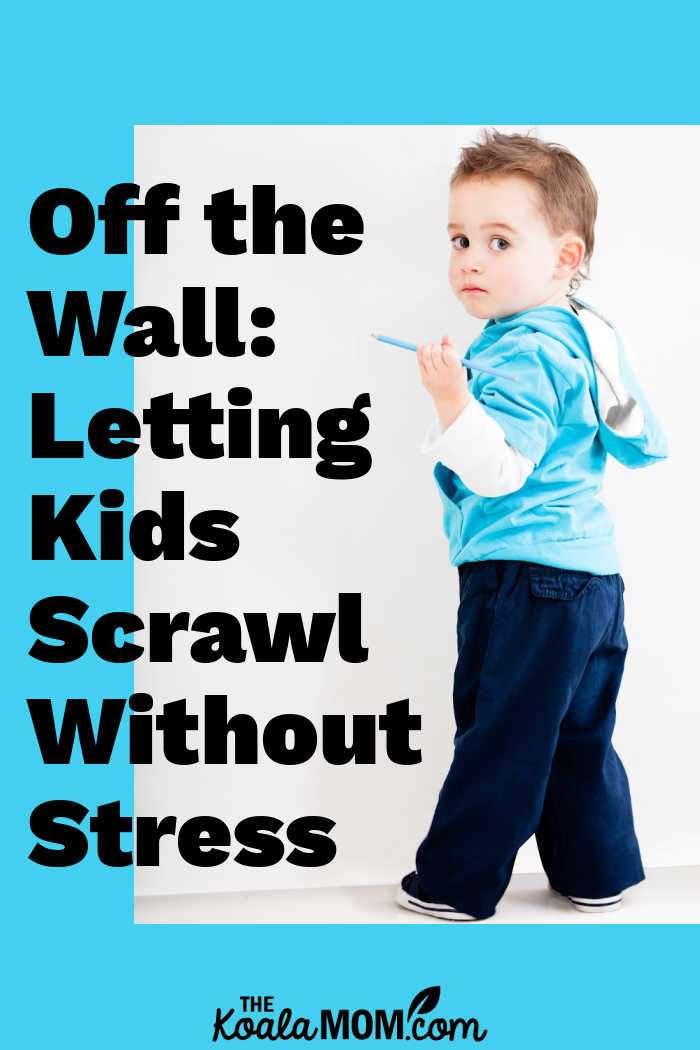This guest post was written for the Koala Mom by Andrew Witkin, CEO of StickerYou.
There is something ingrained in children that makes them want to draw on the walls. It’s a cultural trope that has found its way into mainstream entertainment, from Dennis the Menace comic strips to The Simpsons on television. And every parent knows the horror of walking into the living room to discover that junior has taken a set of magic markers or a box of paint to the walls. Graffiti may be a great creative outlet for children, but in the moment, it sure doesn’t feel like that to mom or dad.

Parents have tried a million different things over the years to try to combat this seemingly insatiable urge to mark up clean walls. Every kids’ art room has an easel, which stands there as a monument to hope and optimism. And while children will occasionally use the easel, that doesn’t preclude them from turning around and causing extensive damage to walls and floors.
Chalkboards and dry-erase boards are also popular, but they have the same problem: they only work if kids follow the rules and stay on the board. Needless to say, they don’t. But in many ways, creating “safe zones” for art is the wrong approach. Instead, why not actually encourage children to draw on the walls? It’s a radical idea, but it makes a lot of sense… if the wall is prepared the right way.
Instead of forbidding children from damaging their homes (and dealing with the inevitable, unpleasant fallout), parents can simply apply dry erase decals to the walls they want to protect. These stickers can be affixed to any flat surface and work just like their boardroom cousins. Kids can write on them with reckless abandon, and at the end of the playdate, their masterpieces can be quickly and easily removed. It really is that easy.
One of the key advantages to this approach is that the stickers won’t damage the paint underneath them, which is kind of the point of the whole exercise. A number of companies make chalkboard paint, which serves the same purpose, but it requires homeowners to actually paint over their beautiful monochrome walls. That’s not exactly ideal, especially for people who are renting and don’t want to forgo a large damage deposit when they move out.
Another key advantage of the dry-erase decals is that they can be configured to fit any size wall. If your kids are drawing in the kitchen, one or two squares might be enough to protect the walls. For larger surfaces, simply add more squares to cover additional surface area as needed.
There is no way to prevent children from destroying things. It’s simply part of being a kid, and parents quickly get used to intentional (and unintentional) spills, dings, and marks all over their homes. But by leveraging dry-erase decals, parents stand a chance at keeping the house looking respectable, even after their kids have spent hours working on The Dragon King versus the Rocketship on the living room wall.
What have your kids drawn on the walls? Would dry erase decals help save your walls?

No Responses Yet